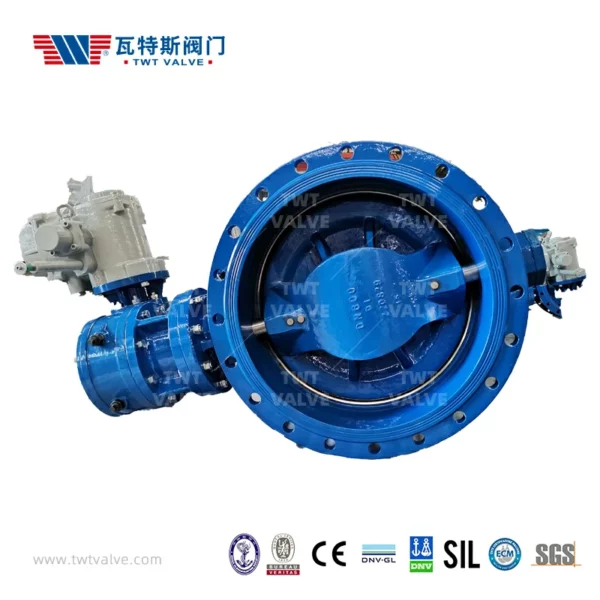Fouling in electric butterfly valves can pose several challenges in industrial processes, potentially affecting valve performance, efficiency, and reliability. Fouling refers to the accumulation of deposits, such as solids, sediment, or sticky substances, on the valve components.
Here are some challenges associated with fouling and ways to mitigate them:
- Reduced Flow Capacity:
- Fouling can lead to a gradual reduction in the flow capacity of the electric butterfly valve as deposits accumulate on the valve disc and seating surfaces. This reduction in flow can impact the overall efficiency of the industrial process.
Mitigation: Regular maintenance schedules, including cleaning and inspection, can help prevent significant fouling buildup. Choosing a valve design with a self-cleaning feature, such as a high-performance butterfly valve, may also help mitigate fouling issues.
- Increased Operating Torque:
- Fouling on the valve components can increase the operating torque required to open or close the valve. This increased torque demand may lead to higher energy consumption and potentially affect the lifespan of the valve actuator.
Mitigation: Implementing a preventive maintenance program that includes cleaning and lubricating the valve components can help maintain optimal operating conditions. Regular monitoring of torque requirements can also signal when maintenance is necessary.
- Valve Sticking or Jamming:
- The accumulation of fouling material may cause the valve to stick or jam, preventing it from moving freely. This can lead to operational issues, delays, and potential damage to the valve components.
Mitigation: Regular inspections and cleaning are essential to prevent fouling-related sticking or jamming. electric butterfly valve Selecting a valve with a design that minimizes the risk of fouling, such as a high-performance butterfly valve, can contribute to smoother operation.
- Impaired Sealing and Leakage:
- Fouling on the sealing surfaces of the valve can compromise the sealing integrity, leading to leaks or unintended fluid bypass. This can be particularly problematic in processes where tight shut-off is crucial.
Mitigation: Implementing a maintenance schedule that includes thorough inspection and cleaning of the sealing surfaces can help prevent fouling-related sealing issues. Choosing a valve with a self-cleaning design or a regular cleaning regimen for critical applications can enhance sealing performance.
- Loss of Control Accuracy:
- Accumulated fouling on the valve components may interfere with the precision and accuracy of the valve’s control function, impacting the overall control system’s performance.
Mitigation: Regular calibration and testing of the control system, along with cleaning and maintenance of the valve, can help ensure accurate and reliable control. Using positioners or smart valve controllers with feedback mechanisms can enhance control accuracy.
- Corrosion Risk:
- Certain fouling materials, especially those containing corrosive elements, may contribute to corrosion on the valve surfaces. Corrosion can compromise the structural integrity of the valve and lead to premature failure.
Mitigation: Employing corrosion-resistant materials in the valve construction can help mitigate the risk of corrosion. Regular inspections and cleaning can also prevent the accumulation of corrosive fouling.
In summary, addressing fouling challenges in electric butterfly valves involves implementing regular maintenance practices, selecting appropriate valve designs, and monitoring valve performance. By doing so, industrial processes can maintain efficient and reliable valve operation while minimizing the impact of fouling on system performance.

